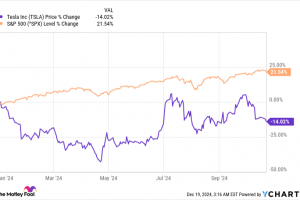
CrowdStrike (NASDAQ: CRWD) stock saw another big sell-off in this week’s trading. The company’s share price ended this week’s trading down 16% from last week’s market close, according to data from S&P Global Market Intelligence.
Last Friday, CrowdStrike’s software was at the center of a major IT outage — and the event has triggered big sell-offs of the company’s stock. The cybersecurity specialist’s valuation pullback continued this week as investors and analysts weighed the potential fallout of the major system failure for the business.
CrowdStrike’s update on the big IT outage hasn’t comforted investors
Due to a bug contained in an automatic update that CrowdStrike rolled out last Friday, millions of computers using Microsoft‘s Windows operating system were taken offline last week. CrowdStrike has emerged as a leading provider of endpoint device protection and other related cybersecurity services, but last week’s far-reaching IT meltdown has called the company’s systems, performance outlook, and valuation into question.
CEO George Kurtz provided an update on Thursday that said 97% of Windows sensors that had been taken down in the previous week’s outage were now working again. Unfortunately, the recovery hasn’t done much to assuage concerns among investors and analysts.
Analysts are cutting price targets on CrowdStrike
On Wednesday, Citigroup published a note on CrowdStrike maintaining a buy rating on the company’s stock. On the other hand, lead analyst Fatima Boolani lowered the firm’s one-year price target from $425 per share to $345 per share. If CrowdStrike were to hit that target, it would represent upside of roughly 35% compared to the company’s current share price. But Boolani also highlighted a risk that CrowdStrike could fall to as low as $170 per share.
In a note published Thursday, Barclays lowered its one-year price target on CrowdStrike from $400 per share to $285 per share. Based on the cybersecurity specialist’s share price at today’s market close, that would imply upside potential of roughly 11%. While Barclays maintained an overweight rating on…
..






